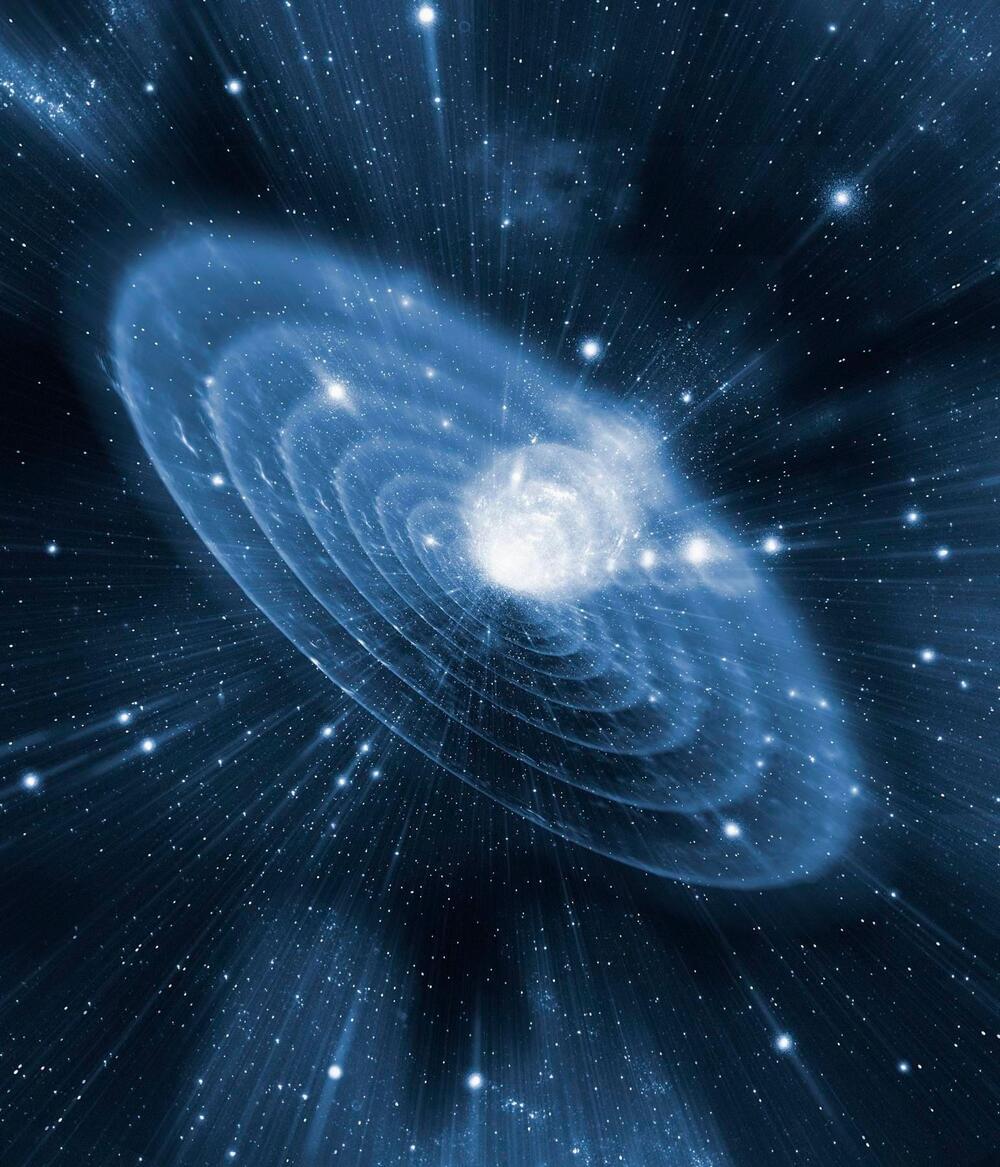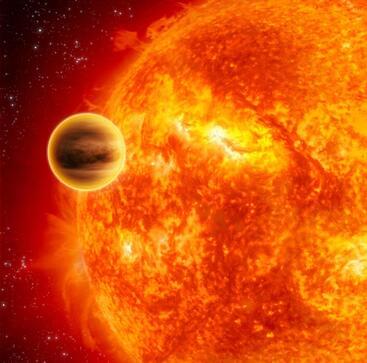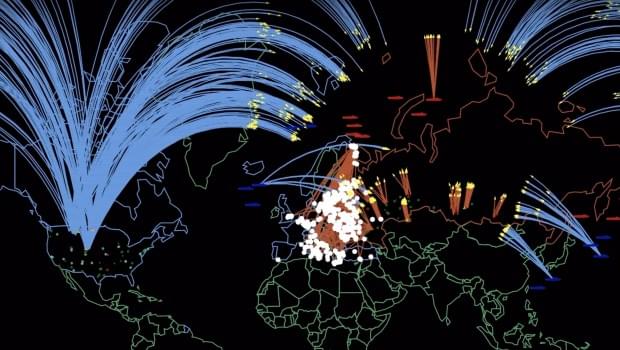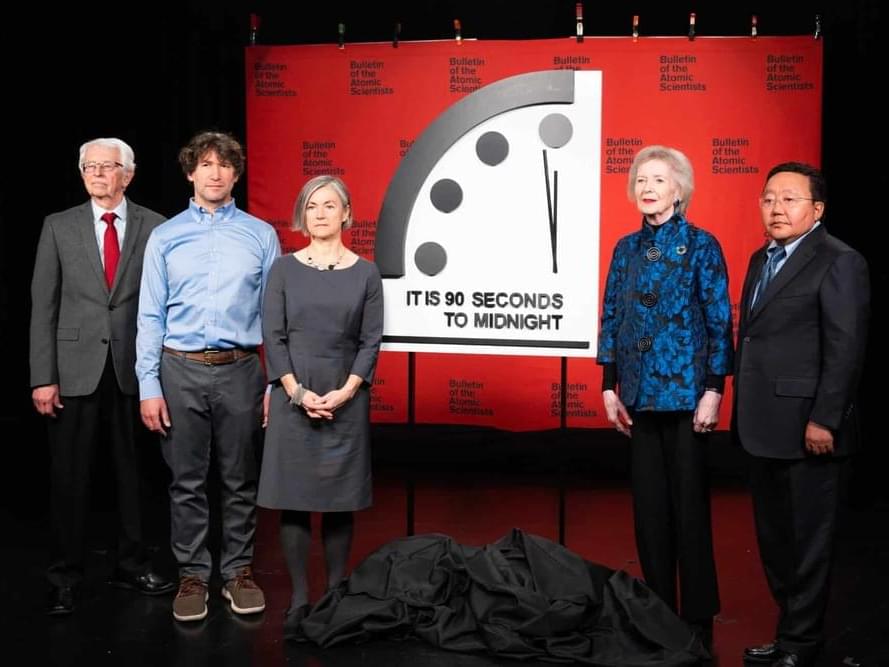Does artificial general intelligence pose an existential risk?
Category: existential risks – Page 33
Nowhere to hide
But the catastrophe will not be limited to those two belligerents and their allies.
The long-term regional and global effects of nuclear explosions have been overshadowed in public discussions by the horrific, obvious, local consequences of nuclear explosions. Military planners have also focused on the short-term effects of nuclear explosions because they are tasked with estimating the capabilities of nuclear forces on civilian and military targets. Blast, local radiation fallout, and electromagnetic pulse (an intense burst of radio waves that can damage electronic equipment) are all desired outcomes of the use of nuclear weapons—from a military perspective.
But widespread fires and other global climatic changes resulting from many nuclear explosions may not be accounted for in war plans and nuclear doctrines. These collateral effects are difficult to predict; assessing them requires scientific knowledge that most military planners don’t possess or take into account. Yet, in the few years following a nuclear war, such collateral damage may be responsible for the death of more than half of the human population on Earth.

Godfather of AI Warns That Powerful Companies Are Seizing Control of It
Meta executive and “godfather of artificial intelligence” Yann LeCun has had it with people ringing the alarm bells about a hypothetical AI doomsday.
In a lengthy post on X-formerly-Twitter, the computer scientist argued that there’s a far bigger threat hovering over the burgeoning industry: powerful companies seizing control of the future of AI and using it to prop up their wealth and influence.
It’s a pertinent point, as an increasingly smaller number of AI companies are starting to emerge as the early winners in the AI race, claiming an ever-growing slice of the highly lucrative AI pie.

Earth Struck By Enormous Burst Of Gamma Rays From Two Billion Light-Years Away
A massive burst of gamma rays produced by the explosion of a star almost two billion light-years away was so powerful that it changed Earth’s atmosphere, according to scientists.
The brightest gamma-ray burst ever seen and detected impacted Earth’s atmosphere. It came from a supernova and may reveal why Earth has had mass extinctions in its past.

Nvidia CEO Jensen Huang says his AI powerhouse is ‘always in peril’ despite a $1.1 trillion market cap: ‘We don’t have to pretend…we feel it’
Nvidia is on a tear.
But “there are no companies that are assured survival,” Huang warned Thursday at the Harvard Business Review’s Future of Business event.
Nvidia in its 30-year history has faced several existential threats, which helps explain why Huang recently told the Acquired podcast that “nobody in their right mind” would start a company. For example, it almost went bankrupt in 1995 after its first chip, the NV1, failed to attract customers. It had to lay off half its employees before the success of its third chip, the RIVA 128, saved it a few years later.
“We have the benefit of building the company from the ground up and having not-exaggerated circumstances of nearly going out of business a handful of times,” Huang said this week, as Observer reported. “We don’t have to pretend the company is always in peril. The company is always in peril, and we feel it.”

Giant Planets Cast a Deadly Pall
How they can prevent life in other planetary systems. Giant gas planets can be agents of chaos, ensuring nothing lives on their Earth-like neighbors around other stars. New studies show, in some planetary systems, the giants tend to kick smaller planets out of orbit and wreak havoc on their climates.
Jupiter, by far the biggest planet in our solar system, plays an important protective role. Its enormous gravitational field deflects comets and asteroids that might otherwise hit Earth, helping create a stable environment for life. However, giant planets elsewhere in the universe do not necessarily protect life on their smaller, rocky planet neighbors.
A new Astronomical Journal paper details how the pull of massive planets in a nearby star system are likely to toss their Earth-like neighbors out of the “habitable zone.” This zone is defined as the range of distances from a star that are warm enough for liquid water to exist on a planet’s surface, making life possible.

North Korea is “preparing” for war with nuclear weapons buildup
North Korean leader Kim Jong Un is “seriously preparing” for war as it builds its nuclear weapons arsenal, according to an expert on Korean history.
After decades of international pressure attempting to stop its development of nuclear weapons, North Korea announced during the administration of former President George W. Bush that it was conducting nuclear tests and had weapons. The country now has an arsenal that includes an estimated 35 to 63 warheads, according to the Institute for Science and International Security.
In an interview published by The Financial Times on Thursday, Kookmin University history professor Andrei Lankov said that Kim had been emboldened to build the nuclear arsenal due to Western leaders failing to take advantage of earlier opportunities to pressure the regime, wrongly believing that the nuclear program was not “a realistic threat.”

Nuclear Disarmament and UN Reforms
Although essentially the United Nations are now making nuclear weapons illegal with new treaties like nuclear disarmament. Russia currently has taken another route for globalization and possibly nuclear escalation. As currently the doomsday clock seems closer to midnight which could mean the end of the world scenarios due to Russias escalation and the possibility of all out nuclear war globally and then nuclear annihilation of the planet. Even with current wars are actually seemingly always going on but this global escalation of nuclear war is a zero sum game as no one would be the winner due to radiation levels circulating the planet. I do think that the us and china are in a treaty but so far Russia is still escalating which now holds the world now ransom.
This is a summary of Policy Brief 139 which is available with full references on the Toda Peace Institute’s website.
In January 2021, a global treaty came into force outlawing the bomb. The Treaty on the Prohibition of Nuclear Weapons (TPNW or Ban Treaty) is the most significant multilateral development in nuclear arms control since the Non-Proliferation Treaty’s (NPT) entry into force in 1970. It establishes a new normative settling point on the ethics, legality and legitimacy of the bomb.
The possession of nuclear weapons by nine countries did not suddenly became illegal with the treaty’s entry into force in January 2021. However, it would be false to claim that a UN-negotiated treaty, following a UN-authorised process and conference, has no implications for the legality and legitimacy of nuclear-weapon possession and practices.

New Study on US-Russia nuclear war: 91.5 million casualties in first few hours
34.1 million people could die, and another 57.4 million could be injured, within the first few hours of the start of a nuclear war between Russia and the United States triggered by one low-yield nuclear weapon, according to a new simulation by researcher’s at Princeton‘s Science and Global Security programme.
